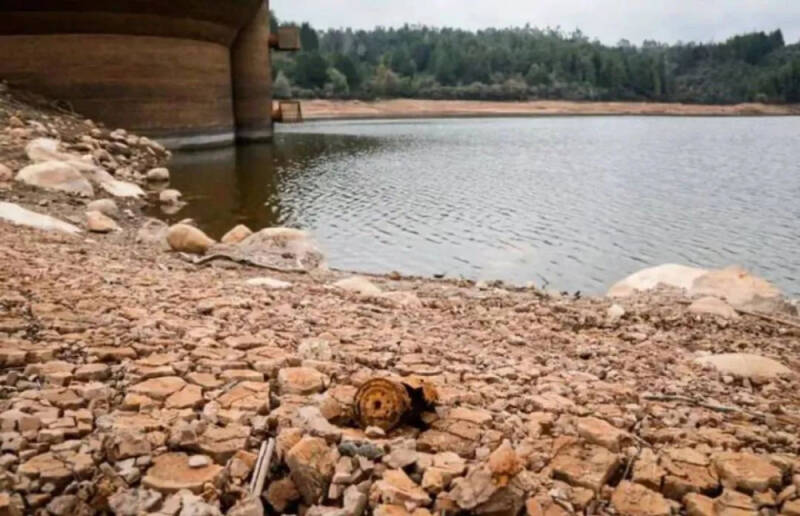Coffee production and stocks in Colombia are gradually declining due to the fire!
According to media reports, dry weather has hit the whole of South America in recent days, and many countries in South America have reported severe drought and been hit by forest fires. In addition to Brazil, countries such as Peru, Ecuador and Colombia are not immune from the disaster. According to the Colombian government, several provinces in Colombia have been hit by forest fires and are currently being put out.
According to Colombia's National risk and disaster Administration, nearly 11000 hectares of land in Colombia has been destroyed by fires, some of which are bordering Ecuador, Peru or Brazil.
At present, it is reported that in addition to the border areas with a number of countries, serious fires have also broken out in several provinces in central Colombia. In the Andean province of Tolima, a forest fire broke out, injuring two people, destroying farmland and forests, and the government dispatched eight planes to put out the fire. In addition, in the Colombian capital Bogota, the province of Kundinamaca has also been hit by forest fires, mainly concentrated in Canada Chancipa, in the area a large area of forest and vegetation were destroyed by the fire, firefighters are currently fighting the fire.
However, according to local firefighters, the current coefficient of difficulty in extinguishing the fire is very high, mainly because the weather is very dry, the fire is still spreading due to bad strong wind weather and dry environment, and drought leads to a shortage of water.
According to Colombia's National disaster risk Authority, in the past three months, affected by a severe drought on a large scale, the Amazon, one of the largest rivers in South America, has suffered a severe drought. The water level of the Amazon in Colombia has fallen sharply, by 80 to 90 percent. The ship ran aground and large tracts of land were exposed because the water level was too low.

Earlier, Colombia reported that in the second half of this year, Colombia was still affected by the aftermath of El Ni ñ o, with hot weather and drought intensifying and no rain between August and September, resulting in a severe shortage of water resources in Colombia. The water level of several major water supply reservoirs has fallen, so the amount of water that can provide capacity has continued to decline. Moreover, at present, many provinces in Colombia have been affected by large-scale fires, which has also affected the surrounding water sources, and the shortage has intensified.
Moreover, the largest fire in the southwestern province of Cauca in nearly 30 years has seriously affected many parts of the province, destroying a large number of coffee and other crops and affecting surrounding water sources. As a result, several provinces in Colombia began to restrict water use in September, and the drinking Water and basic Sanitation Regulatory Commission (CRA) announced a series of strict water restrictions.
At present, extreme weather such as drought and fire have seriously affected the coffee industry in Colombia, where coffee is mainly concentrated in the central Andes, but these areas are very vulnerable to forest fires. In addition, water restrictions are a major challenge for the coffee industry. Irrigation of coffee plants should have been increased due to drought and lack of rainfall, but the government has limited current water use. it is also called on agricultural industries such as coffee and bananas to adopt more effective irrigation techniques to optimize water use and not to use it at will. Many farmers are caught in a dilemma, on the one hand, the lack of water will not be conducive to coffee growth and reduce production, on the other hand, increasing the use of water may exceed the established water limits, resulting in fines and increased costs.
At present, coffee production in Colombia is declining. According to the Colombian growers Association FNC, coffee production remained at about 1.1 million bags (60 kg / bag) from May to July this year, but the latest data show that Colombia produced 1.05 million bags of coffee in August, a decrease of nearly 100000 bags, and Colombia's coffee stock gradually decreased, down 7.2% from the previous month to 962000 bags.
The reduction of inventory and coffee production will lead to a reduction in the amount of available exports. As the third largest coffee producer in the world, the reduction in export volume is not conducive to the development of the country's coffee industry. In addition, the decline in exports is also driving up the price of international coffee, coupled with a reduction in production reported by a number of countries, coffee prices are difficult to fall in the short term.
For more information about coffee producing areas, please scan the code directly and follow: coffee comments.
Long press the QR code to follow:
TRANSLATE with
XEnglishArabicHebrewPolishBulgarianHindiPortugueseCatalanHmong DawRomanianChinese SimplifiedHungarianRussianChinese TraditionalIndonesianSlovakCzechItalianSlovenianDanishJapaneseSpanishDutchKlingonSwedishEnglishKoreanThaiEstonianLatvianTurkishFinnishLithuanianUkrainianFrenchMalayUrduGermanMalteseVietnameseGreekNorwegianWelshHaitian CreolePersian
TRANSLATE with
COPY THE URL BELOW
BackEMBED THE SNIPPET BELOW IN YOUR SITE Bing Webmaster PortalBack
Important Notice :
前街咖啡 FrontStreet Coffee has moved to new addredd:
FrontStreet Coffee Address: 315,Donghua East Road,GuangZhou
Tel:020 38364473
- Prev

How to make hand-brewed coffee How to make hand-brewed coffee What is the proportion of powder ice made by hand-brewed ice? Tips for making coffee with ice cream hands!
Making ice cream coffee is very simple! By using ice cubes, the hot coffee washed out of hot water can quickly cool down in a short period of time. Because of its refreshing taste and lively taste, Bingshuochong has become a favorite for some friends. However, many friends have found that different stores have different opinions on the production methods of ice handchong
- Next

The old man swipes the video loudly! The clerk and customer reminded them to be scolded!
▲ Click to pay attention| Daily Boutique Coffee Culture Magazine Coffee Workshop Recently, a netizen posted a video of an old man swiping videos loudly in a coffee shop and conflicts with people around him, which attracted the attention of many people. According to popular news reports, the video took place in a coffee shop in Suzhou, Jiangsu Province, and an old man sitting in one of the seats swiped it.
Related
- Is espresso stored overnight in the refrigerator harmful to your body? Is frozen coffee better than freshly ground coffee?
- What parameters and proportions of water temperature should be used to grind and brew fresh coffee beans? Why can't I drink freshly roasted coffee right away?
- Customers have "changed" Manner's new products! Shop assistant: Please don't mess around!
- Remove sockets in customer areas at Starbucks stores?! Netizen: I won't go if I really tear it down
- What is the difference between the taste steps of sun-dried coffee and washed coffee? Why is sun-cured coffee sweeter and washed coffee sour?
- The recipe for salty grapefruit dirty is revealed! Coffee Festival salty grapefruit dirty coffee making materials parameters ratio milk share!
- How about the flavor of Sunlight 74158 at Sidamo Banshaha Mathieu Processing Factory in Ethiopia? 74158 Share the proportion of coffee brewing parameters!
- What effect does Italian American coffee with filter paper have? Will coffee taste better if it is put on filter paper at the bottom of the powder bowl?
- What is the color difference in coffee beans? What are the characteristics of honey processed coffee beans? Why are the anaerobically treated coffee beans uneven in color?
- How does novice Xiaobai quickly get started and make coffee? Newbies learn to make coffee by hand and share the specific steps and process process!

